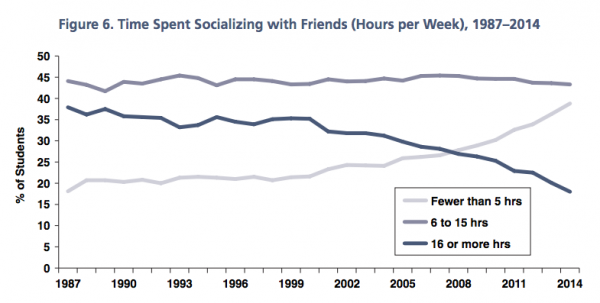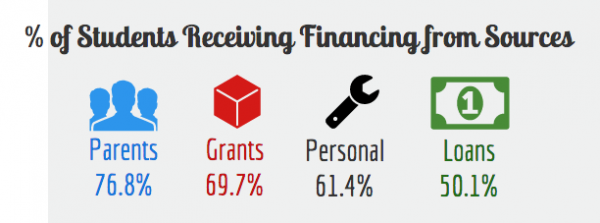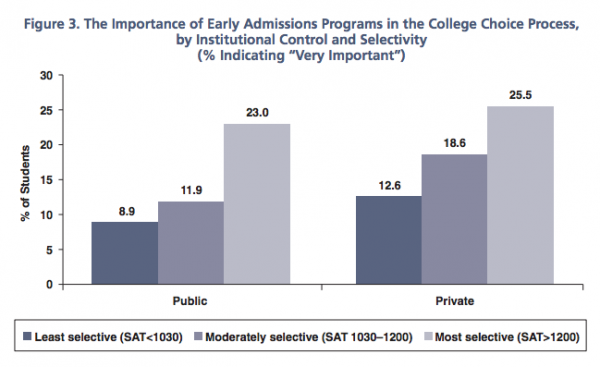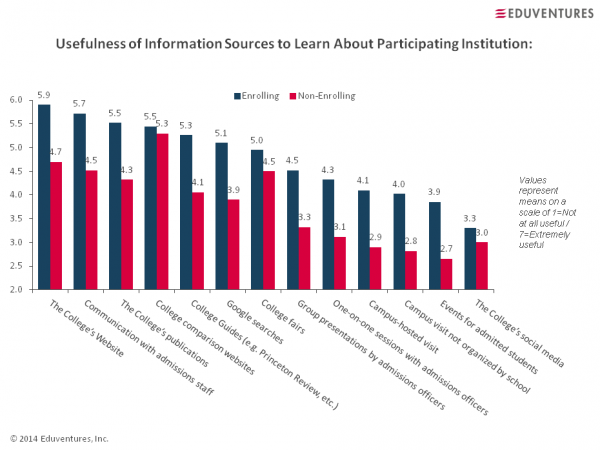What Higher Ed Marketers Need To Understand About Prospective Students
Higher education marketers are constantly trying to get into the brains of prospective college students. Below are some of the key trends exemplifying these incoming students and the changing academic landscape.
Higher education marketers are constantly trying to get into the brains of prospective college students. In the past, we have discussed the importance of understanding the student lifecycle and the prospective undergraduate customer journey, but sometimes it is just as important to identify who incoming students are as people. Every year, the Cooperative Institutional Research Program at the Higher Education Research Institute at UCLA publish their annual Freshman Survey report, covering a wide variety of topics from career aspirations all the way to their tendencies to party. Below are some of the key trends exemplifying these incoming students and the changing academic landscape.
Undergraduate Studies is the First Step in a Long Process
Since the competition for jobs has steadily increased over the years, many people consider an undergraduate degree to be the new high school diploma. It’s fairly true, and students are beginning to recognize it. By 2022, approximately one quarter of entry level jobs will require a bachelor’s degree. The mass majority (86%) of students plan to go to college because they believe it will ultimately lead them to finding a better job. However, many see that additional education is becoming closer to a necessity as well. Approximately 76.5% of incoming freshman see themselves getting an additional degree (Masters or Doctorate) after their undergraduate experience, a 27.3% increase since 1974.



Less Experience Socializing, Yet Still Want To
Current prospective students are looking for a way to enhance their social lives, but are entering college with less social experience than any other class before. In 1987, 37.9% of high school students spent 16 or more hours with their friends, while only 18.1% of them declared they spent less than five hours with their friends. As seen by the chart below, these numbers practically flip-flopped by 2014:

One contributing factor to the lack of social activity is that kids just aren’t partying like they used to. In 1987, 75.7% of incoming freshman declared that they typically partied at least an hour during the week, but this number has greatly diminished to only 38.6% in the most recent class. Another major factor that may be attributing to this decline is the growing popularity of social media platforms amongst Gen Y individuals, allowing students to socialize through digital means. Just in the past couple of years, the amount of students spending six or more hours on social media has increased by 8.3% (18.9% in 2007, 27.2% in 2014). While it is still important for universities to reach out to students through social media, 44.2% of students ranked the social activities on campus as an important factor in their decision making process.
Students Still Worried About Financing College
Coming off of one of the worst recessions in American history, money is at the forefront of students’ goals - and concerns - when entering college. While only 44% of students thought being very well off financially was important in 1974, this factor has skyrocketed up to 82% of students in the most recent year. However, many students are still trying to figure out how they are going to financially make it through college first. A significant 54.5% of students have some concerns about financing college, while an additional 12.3% of students cite it as being a major concern.

So how are these students approaching the problem, exactly? The answer varies greatly. The largest source of financing comes from parents, including 34.5% of students receiving $10,000 or more per academic year from their parents. On the other side of the spectrum, nearly half of the incoming students are taking out loans and 61.4% are contributing to their financing with their own money. Even though getting through college financially may be difficult for certain students, 76.4% believe that they will be able to succeed in the American society as long as they put the work in.
Academic Reputation Matters Most, But Other Factors Becoming More Important
There are certain things that do not change with students. With 65.4% of incoming freshman naming it as its top factor, a good academic reputation continues its streak as being the most important element since the survey launched. On the other hand, some previous negligible factors are beginning to gain more traction with recent students. For example, early decision programs are beginning to influence students on where they apply. In 1999, 6.9% of first-time, full-time students noted that being admitted through an early action or early decision program was “very important” in deciding to choose their current institution; this increased to 15.7% in 2014. Logically, the early decision programs are more important to individuals that are competing for spots at more selective schools (see below). Therefore, top tier higher education institutions need to establish and promote early decision programs to prospective students in order to grab their attention near the beginning of their journey.

Overwhelmed by the Application Process
Applying for schools can be a tiresome process. Before the recent higher education boom, students would typically apply only to a couple schools, however nowadays 35.4% apply to six or more schools, representing a 23.4% increase in just the past decade alone. While this allows applicants more flexibility and opportunity, it comes with a cost. Around 34.6% of students still feel overwhelmed despite the introduction of the Common App. The increase in applications also means more people are denied from their preferred college. While 69.5% of students went to their first choice college in 2004, only 55% of students do so now. These numbers solidly reflect the rapidly evolving competitive landscape for students applying to college.

How to Reach Out to Students
Okay, awesome. You’ve now seen everything you need to know about those young guns going to college. So what’s the next step? Figuring out how to reach out to these prospective students. A recent study by Eduventures analyzed several information sources and how students interacted with them. As illustrated below, a college’s website is a crucial spot to reach out to students as it ranks the most useful information source for enrolled students and the third most useful for non-enrolled individuals. As a way of supplementing the website, colleges should put additional focus on improving communication with the admissions staff and increasing their presence at college fairs.
